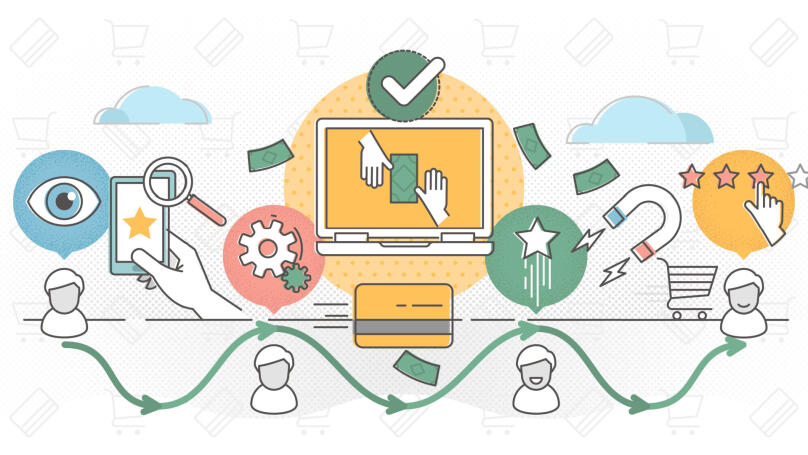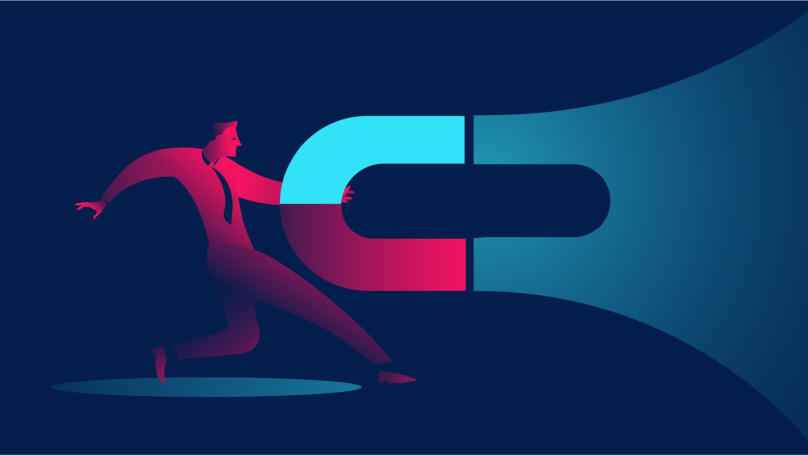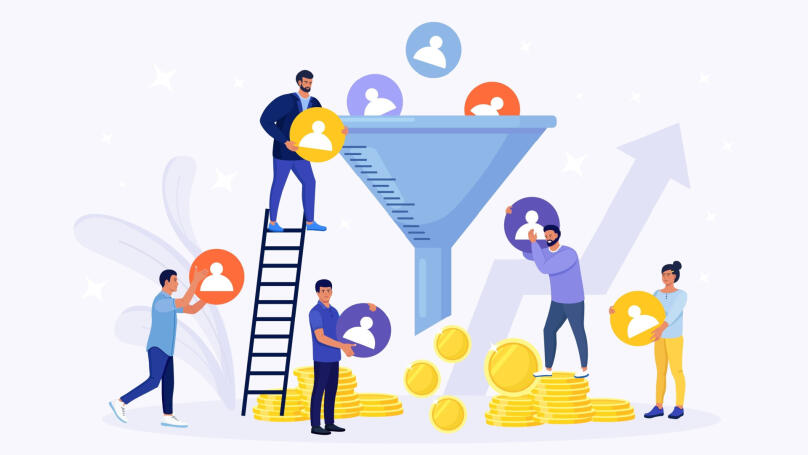Tripwire

What is a tripwire
A tripwire is a product that prompts a customer to make a quick decision to buy another one. It is usually an affordable offer that complements the main product line. In simple words, a tripwire is a kind of trap for the customer, which encourages them to make impulse purchases without thinking and analyzing any product.
Since tripwire is not the company's core product, it is not expected to make a direct profit. It always has a token price to make the customer appreciate an unexpected benefit. This technique is based primarily on consumer psychology - after a successful first purchase customers have no concerns or doubts about buying the company's particular product. A tripwire performs one more important function - it conveys the main value of the core product to the buyer.
What is the purpose of tripwires?
The tripwire is the first paid product in the market relations chain between sellers and buyers. It is designed to establish a financial relationship with the customer and prepare them for further interaction with the company in the sales funnel, i.e. to make the main purchase. The tripwire addresses the following tasks leading to the main goal:
- eliminating the psychological barrier before the first purchase (The purchase of such a minor product as a tripwire will allow customers to make a larger purchase in the future);
- attracting attention to the company's products (Customers want to buy a tripwire right here and now, because it is an inexpensive product which can partially satisfy their needs);
- converting prospects into customers (After buying a tripwire, the client becomes your brand's customer);
- earning customer trust and loyalty (Thanks to the tripwire, a long-term connection is established between the brand and its customers);
- reducing the decision-making cycle. (Most customers take a long time to make decisions, they tend to have doubts whether they are making the right choice, but when a customer gets a chance to buy the product for a token amount, their doubts go away faster).
Tripwire and lead magnet

In the sales funnel, the tripwire comes after the lead magnet. As you know, a sales funnel is the path that the customer covers from getting acquainted with the proposal to buying the product. That is, it is a certain route comprised of several stages of interacting with customers, to build a trusting relationship and sell company products. The lead magnet is the funnel's first stage.
A lead magnet is a potentially useful product or content that a user gets for free in exchange for their contact information. Their name, phone number and email address are later used in the sales funnel's subsequent stages. Thus, a consumer who receives a lead magnet is considered a prospect (potential customer).
The main difference between a tripwire and a lead magnet is the financial component. That is, the tripwire is considered the first product that the consumer buys, albeit for a token amount, rather than receiving one for free in exchange for loyalty. A tripwire purchase is the starting point in the economic relationship between sellers and consumers. Thus, prospects that appear at the lead-magnet stage turn into actual customers.
Tripwire types
There are the following tripwire types:
1. Info products
- Books or PDF files. For example, a potential buyer may be offered a checklist, a useful guide or a case study on a topic of interest to them. It is important to keep in mind that any content offered should be unique and useful.
- Depending on the company specifics, a tripwire info product can be the first consultation with a psychologist, a personal growth coach, or any other specialist.
- Video content. It can be a recording of an event, for example, a meeting with leading marketing experts, as well as webinars and lectures.
- Info products can include services for the audit of the project, for example, of the website SEO analysis, advertising, or a social media group. This allows the company to demonstrate its expertise to potential clients.
2. Limited functionality products
Such a tripwire allows to demonstrate the product's main features to consumers, but prevents them from using all its options, or has a time limit. Limited functionality products can be introductory lessons of various online courses, software, or services with a trial period. Online schools and movie theaters often offer such tripwires, as trial periods of using their service for a token fee. They offer, for example, a week-long access to the course for only $1.00 and then the subscription fee will be much higher.
3. Discounted products or promotion items
For example, subscription to a streaming or any other online service for a minimal fee with a special promo code. Many companies also offer a significant discount on the first purchase or order. All this allows to test the product and the service quality. Various product samples are among most common 'bait' items. It is especially relevant for perfume stores, for example. After all, samples are specimen of the main product. Most likely, the potential client will be happy to buy a few such samples to get acquainted with the product, and after choosing a suitable fragrance they are more likely to buy the main one.
A discount may also be offered on related products. That is, by purchasing a certain product, the customer can choose a few additional details or accessories that will improve or expand the functionality of the main purchase. A discount offered on such goods greatly helps to sell them. For example, the photographer may offer a gift photo shoot to go along with the main one.
How to choose a tripwire

It is not easy to identify a tripwire most effective at the funnel's early stages. In any case, it is best to start selecting a tripwire by analyzing your target audience.
Stage 1. Target audience analysis - its wants, needs and capabilities
It is essential to clearly identify the company' potential customers or even a specific product it wants to promote. At this stage, the key task is to clarify who the target audience of the brand are. To do this, you need to identify the audience's needs and requirements, study their behavior and figure out the main criteria that drive their economic decisions. It is best to segment the audience based on their shared characteristics. For example, the audience can be broken down by age, gender, geographic location, social status and income level.
Step 2. Examining all stages of the sales funnel
Sales funnel analysis will help evaluate the efficiency of each stage and see at what point the company loses potential customers. Besides, a detailed study of the sales funnel stages will provide answers to the questions important for the company business growth:
- At what stages is customer attrition the largest?
- What customer categories are most interested in your product?
- What processes need to be included or improved in the sales funnel?
- What inefficient steps should be eliminated altogether?
Step 3. Market competition analysis
This stage aims to compare your company's offerings to those of your competitors. To begin with, identify your competitors, study their advantages, sales tactics, promotion strategy and its outcomes. Also analyze the product they use as a tripwire, and then consider what better alternative you can offer, drawing on the information obtained at the previous stages.
In addition, market competition analysis helps you discover marketplace gaps that your company's products can fill. So, it allows you to identify market trends, develop new in-demand products, and sell them most effectively.
Step 4. Choosing the most appropriate tripwire
First of all, it is essential to understand what products the company can offer as trial goods. Take into account that the value of the trial product - the tripwire - for potential customers should be somewhat higher than its price, but within reasonable limits, of course. In order to choose the most suitable product, it is essential to test several options. Remember that the tripwire must be linked to your core product line. For example, if the company specializes in smartphone sales, you can offer an inexpensive case as a tripwire. If this offer doesn't enjoy a demand, try other options such as headphones, chargers, phone stands and any other similar accessories. However, also take into account that the tripwire should not fully meet customer needs, because it is intended to further guide customers through the sales funnel.
Step 5. Advertising
After you choose the most efficient tripwire, which will enjoy demand among potential customers, you should advertise a forthcoming promotion, a special offer or a discount scheme. Use the company official website, social media accounts, banners, and email newsletters as advertising platforms.
Mistakes in creating tripwires
- The tripwire has no real value
Though the tripwire is not a core product, the potential buyer must clearly see the benefits and utility of its purchase. Otherwise, it will not sell the main product or the related one.
- The tripwire is unrelated to the main product
In order to prompt the customer to buy the main product, the tripwire must relate to it and prove the main product's value.
- The tripwire completely duplicates the main product
In this case, the customers will not need to buy the main product at full price.
- Too big a discount / other benefit
In this case, consumers will buy the entire item under a promo, but will not buy the main product, and therefore will neither move up the sales funnel nor become regular customers. It is essential to keep in mind that a tripwire should not fully meet customer needs, but only get them interested and prompt to buy the main product.
- Vague terms
The customer should clearly understand the actions they need to take to get a bonus or a discount and subsequently buy the main product.
Successful tripwires - examples

Example No.1 Papa John's pizza chain
A major US food service company offers a 30% discount on the first order at Papa John's. This is the third type of tripwire, which involves a significant discount on the first purchase. Such promotions attract potential customers and subsequently help convert them into actual and even regular ones.
Example No. 2 Apple Music
Apple tripwire is a trial subscription to Apple Music, which costs only $0.99 and is the customer's first purchase on the app. This is considered a limited functionality product, meaning it has a time-limited usage. After the customer subscribes, passes the trial period and tests all the features, functions and options of Apple Music, they will want to continue using the app and will renew the subscription for a much higher fee.
Example No. 3 Disney Movie Club Library
To encourage potential customers to promptly join the Disney Movie Club, the platform's market experts offer to purchase full access to any four movies in the library for only $1.00 In addition, Disney Movie Club memberships and ongoing subscriptions allow moviegoers to receive various bonuses and discounts.
Example No.4 Ahrefs
Ahrefs is an online service for competition research and analysis, such as website SEO analysis. The developers offer potential customers to take advantage of the trial version during a 7-day period for only $7.00. At the same time, the trial version provides full access to all the functions and tools of the platform. This is a good offer, because Ahrefs has its own independent constantly updated database.
Conclusion
So, tripwires allow to quickly and easily overcome the psychological barrier and establish a financial relationship with consumers, turning them from prospects to actual customers. However, despite its psychological role in the sales funnel, its end result will primarily be sales.























